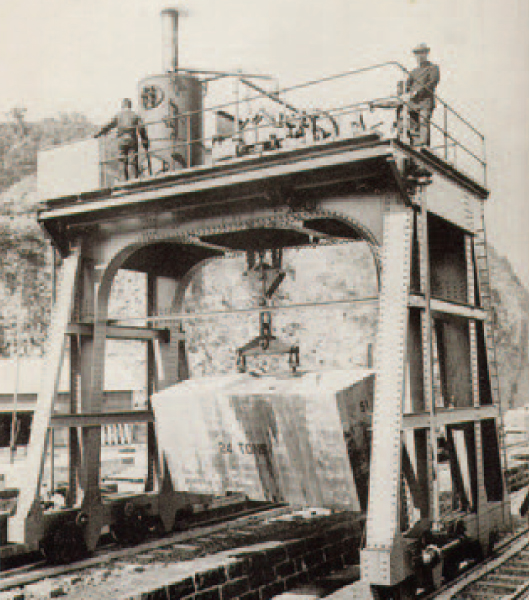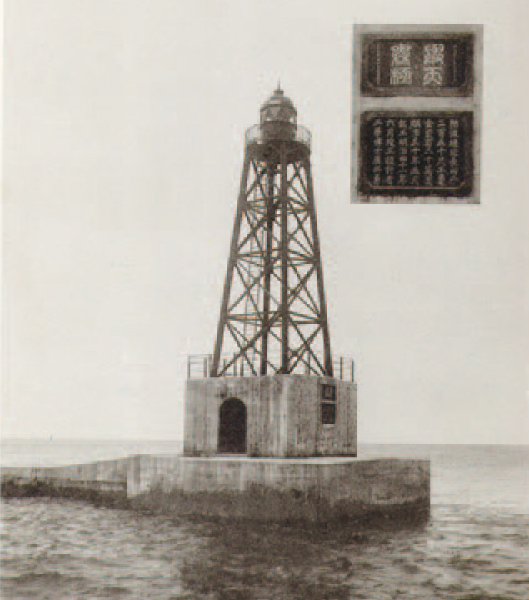
Pre-1908 Breakwater Factory

Rail-Mounted Crane

North Breakwater Lighthouse
A concrete breakwater stretches 1,289 meters across the bay near the former Temiya Coal Pier. Otaru was the main hub for sea traffic in Hokkaido. It is a deep-water port that is partially protected by a cape on the north side. By the end of the nineteenth century, however, as more vessels frequented the port, the storms and rough seas of winter caused increasing damage to ships and their cargo. In 1897, construction began on the breakwater to better protect the port.
【Taming the waves】
Civil engineer Hiroi Isami (1862–1928) devised a wave power formula to calculate the optimum height and angle of the barrier and used it to design the breakwater, made up of blocks weighing between 14 and 24 tons. He determined that stacking the blocks at an angle to the waves would best reduce the impact of heavy seas. On the surface, the breakwater appears to be a narrow concrete jetty, 7.3 meters wide. Under the waterline, blocks stacked like steps on the seaward side break the waves.
In nineteenth-century Japan, breakwaters were often made of large, uncut stones stacked together without mortar, similar to the c onstruction of defensive castle walls. Using concrete, Hiroi designed interlocking blocks that could withstand the heaviest seas. Domestic concrete production was in its early days, and the concrete used a few years earlier in breakwaters at Sasebo in Nagasaki Prefecture and Yokohama in Kanagawa Prefecture was already starting to crack. Hiroi came up with the idea that adding volcanic ash to the concrete mix would increase durability, and he put his idea to the test by making around 60,000 samples of various compositions.
【The father of modern civil engineering】
Hiroi was born into a samurai family of the Tosa domain (present-day Kochi Prefecture), but his family lost their status and income when the samurai class was abolished after the Tokugawa shogunate fell in 1867. At age 10, Hiroi moved to an uncle’s home in Tokyo to study, then later moved to the new frontier of Hokkaido and entered Sapporo Agricultural College at age 15. He was 21 when he visited the United States, first to work on improvement projects on the Mississippi River, then designing railway bridges.
Hiroi returned to Japan after four years in the United States and two years in Germany. He worked as a professor at Sapporo Agricultural College for two years, then joined Tokyo Imperial University (the present-day University of Tokyo) as a lecturer. His students went on to work on projects around the world, including the construction of the Panama Canal. During his twenty-year tenure, he donated his time as an advisor on construction projects across Japan from major bridges to dams and hydroelectric works. After more than 100 years, the Otaru Port North Breakwater still protects the port from heavy seas, and Hiroi’s wave force formula remained in use until the 1980s in the design of ports around the world.